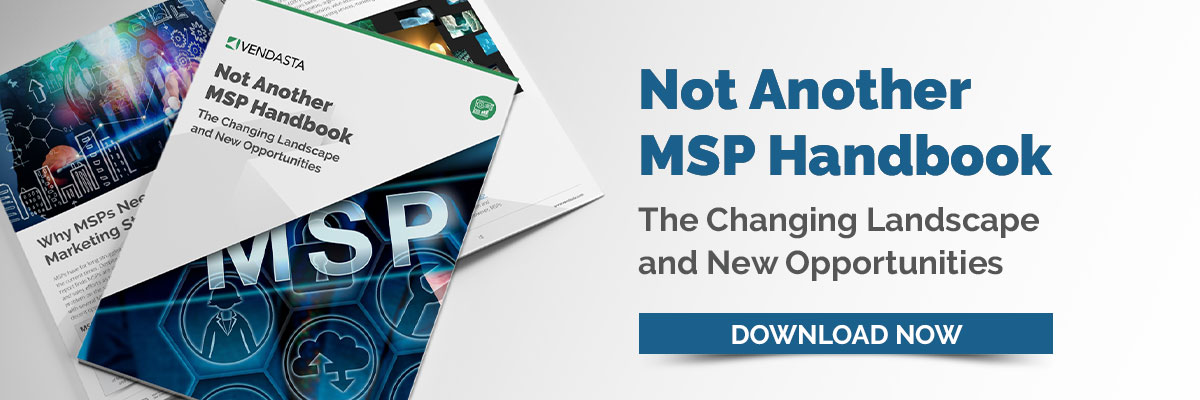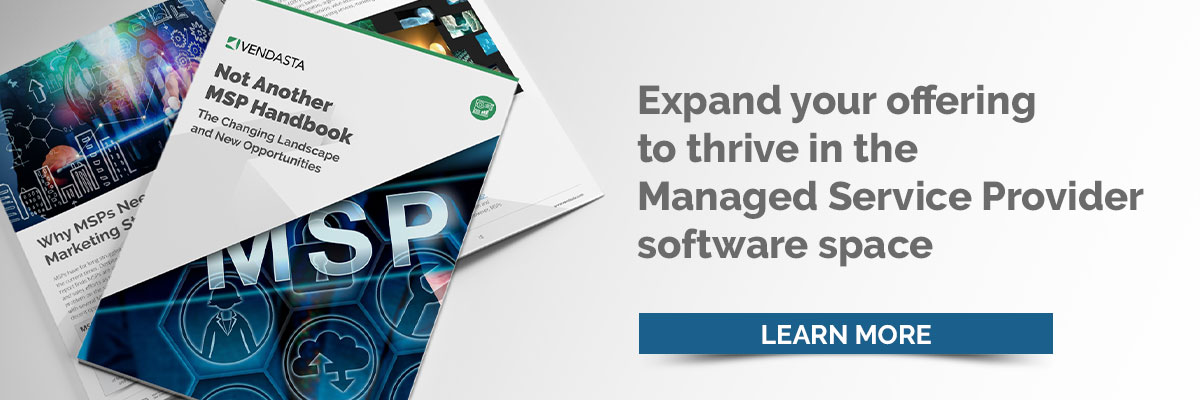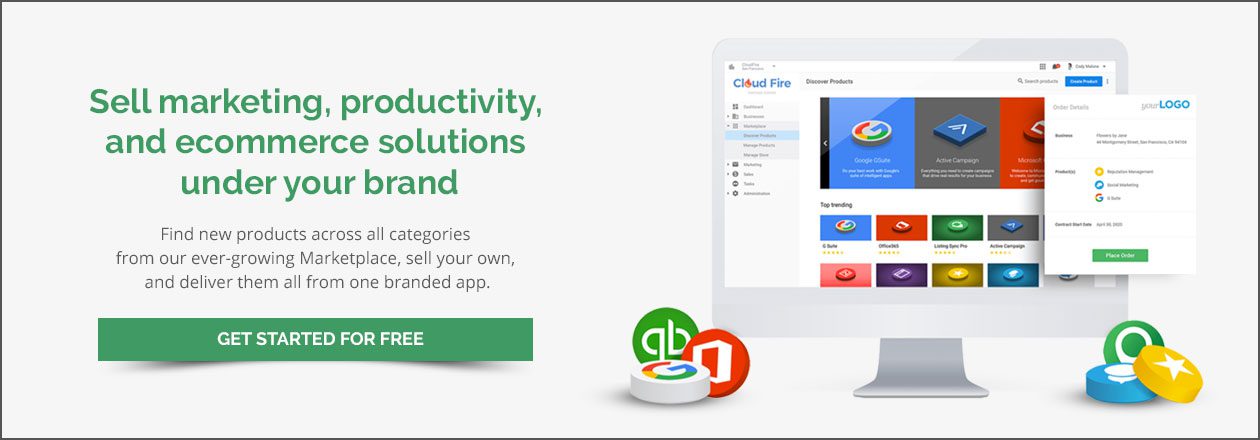Nearly 100 percent of managed services providers (MSPs) in 2019 would have said it was a great time to be in the industry. But can the same be said in a difficult year since and during a time of COVID-19?
Based on data from IBM’s U.S. Retail Index, that reveals the pandemic has accelerated a shift away from physical stores to digital shopping by roughly five years, the answer is an absolute yes, and arguably there’s never been a better time.
Businesses are storming to digital technology and many are looking to MSPs for help in getting there. Research shows 90 percent of companies use some type of cloud technology, 89% of companies have invested in SaaS, and the global cloud computing market is expected to reach US$623.3 billion by 2023, growing at a rate of 18 percent annually.
Get started with the Vendasta Marketplace
MSPs in 2020 provided cloud-based and as-a-service solutions to help companies fast track from traditional business models to modern, more flexible, and adaptive digital marketplaces and ecommerce. But much more help is needed as organizations continue to transform.
Looking to the future
How well equipped are MSPs for the future, as companies reimagine, reinvent, and realign their businesses? According to one market observer, some are and many are not. Research shows the majority of MSPs still rely on time tested— and lower-profit—offerings such as device management (93 percent), server management (89 percent), network management (84 percent), service-based backup and disaster recovery (83 percent), and email services (69%).
Kris Blackmon, a channel strategist and chief channel officer for JS Group, calls these MSPs “the 2020 version of the people who used to crawl around under desks” to set up IT hardware.
A smaller but rapidly growing segment of MSPs are helping their customers achieve business outcomes, looking beyond providing mere technology services.
“It used to be that if a company needed a technology solution, their IT manager or CIO would source it, bring it in, and the inhouse teams would then implement integration and deploy,” Blackmon said. It’s an approach that may not be good enough anymore.
“Business is moving faster than ever and they need fast results in order to compete. As an MSP, you really need to understand where your business customer is going and the milestones they want to hit - where they are hemorrhaging revenue through operational inefficiencies that keep them from making a good profit, and where they are looking to expand or enter new verticals.”
Building a solutions stack
A white Paper titled, 2019 Trends in North American Managed Services, says managed services customers will continue to demand more of their partners. It says the best of the best MSPs will be rewarded for infusing their practices with a greater number of high-touch, high-value services that do more than cover the IT basics. The white paper concludes that the long-term strategy for successful MSPs must include complex offerings built to address clients’ business problems and goals, solutions such as IoT infrastructure services, cloud-based big data and business analytics, and business process outsourcing.
Today, it is business buyers that include heads of marketing and human resources who are among the primary purchasers of information technology (IT) and they are looking to the cloud. Most do their research online, then figure out what they want, and head into marketplaces to find it, bypassing traditional technology integrators.
While it may be quicker and easier to source cloud-based IT from a marketplace, the risk is in missing out on the essential parts of a solution stack - even for seemingly basic applications. According to Blackmon, a typical solution stack requires on average seven pieces of software layered onto the original buy to build a complete solution - even for something as seemingly straightforward as Quickbooks accounting software.
For starters, “you need a backup and you need network connectivity in order to make that QuickBooks work,” she says. Many MSP are looking to become what Blackmon describes as cloud service providers by including supporting IT and services around cloud-based applications. They are also realizing cloud marketplaces are where they need to be because it’s where complete solution stacks exist for business customers.
Finding the right marketplace
But what is the right marketplace for an MSP who wants to be a cloud service provider? It can be a difficult and confusing choice. New marketplaces are being created all the time and every cloud application has some sort of cloud portal in a marketplace. Blackmon advises that MSPs should consider what supports their business objectives.
“If you have vertical, horizontal, or process specialization then you want to make sure you’re in a marketplace that has a good foundation for your expertise,” she says. That means determining how that marketplace best integrates with your systems and current offerings, what are the other capabilities and products offered there, and how can you wrap (what you might offer customers through a) marketplace into your monthly consolidated bill.
Other considerations would be to determine the consulting and other services you can wrap into the products within that marketplace and how it fits together into a monthly consolidated bill.
A white-label marketplace that allows MSPs to attach their own brand rather than working through a third-party would also be important. Ideally, you want to present a complete package of offerings and solutions under your name. The motivation here is that most customers don’t want to deal with multiple providers and different systems, instead preferring a simpler one point of contact and single consolidated bill.
“It’s always been true,” Blackmon says. “But in the era of cloud there are so many apps that are different and separate pieces of infrastructures and platforms. Customers don’t understand (the complexity) and don’t want to understand it. They want someone else to advise them. They just need one provider who gives them access to all the applications (needed) and who will keep it running, integrate it, and manage it - put everything together and send you one monthly bill.”
The more you get into cloud services, the faster that sales cycles become, the faster you need to implement, and the more seamless it must be to manage all disparate applications under one system. Blackmon says she believes cloud marketplaces are the future for MSPs.
“Over the next two or three years we’ll see a drastic divide between the MSPs that are just chasing monthly recurring revenue and those that are trying to evolve to become business consultants and cloud service providers.”
Vendasta Marketplace
Featuring more than 200 products and services, the Vendasta Marketplace offers curated solutions matched to the world’s most common small and medium business needs. Featured are world-class software and service fulfillment. There are no technical integrations, complex contracts or RFPs required. Vendasta’s curated vendor selection ensures you get the best price, are privy to promotions, SLA adherence, and more.
Pay only for products sold to clients—there are no upfront costs and no monthly minimums. Without the risk of a financial commitment, it’s easier to experiment and discover what products best fit the needs of clients plus provide solutions before clients realize they need them.
By browsing through Marketplace, you can select what you want to sell and stock your catalogue of chosen products. It’s easy to build your customized, white-label, store. As a place for your clients to explore everything you have to offer, you’ll be notified when they’re browsing and know what product they’re interested in.
Take everything you sell and funnel it through the Vendasta Marketplace. Integrate your own products and services in one place for all your deals to come through, and use the free ordering system. Sell more of what you already sell or combine your offerings with anything in the Vendasta Marketplace.
Simplify your relationship with existing vendors by inviting them to join Vendasta Marketplace. It’s one login, one dashboard, one bill and all housed under one roof.


 By
By 

